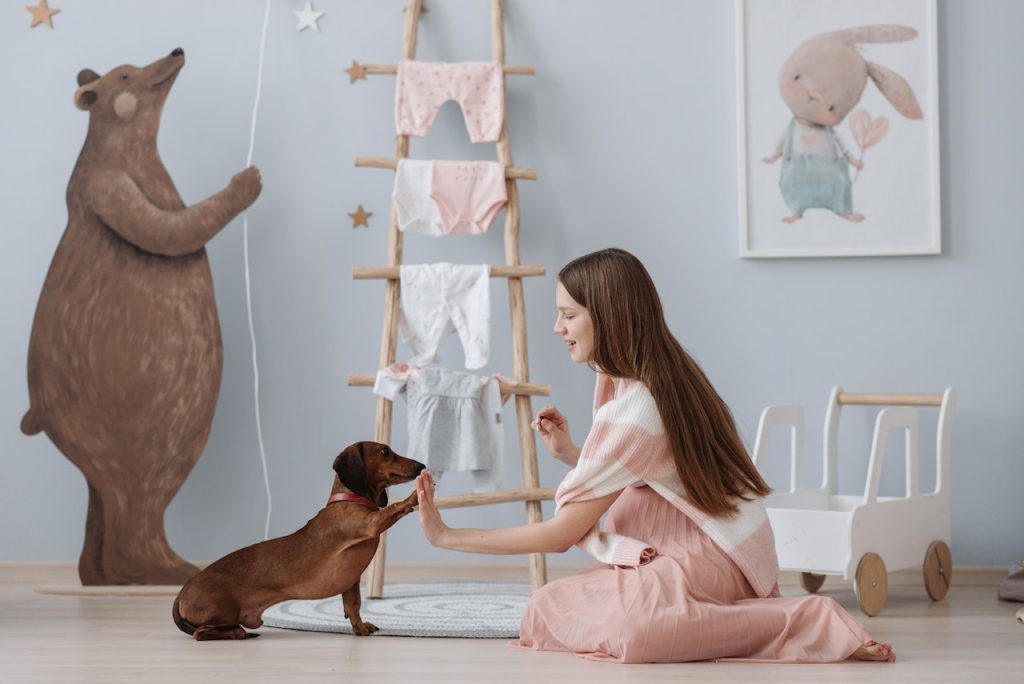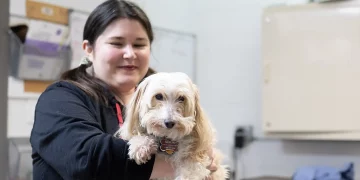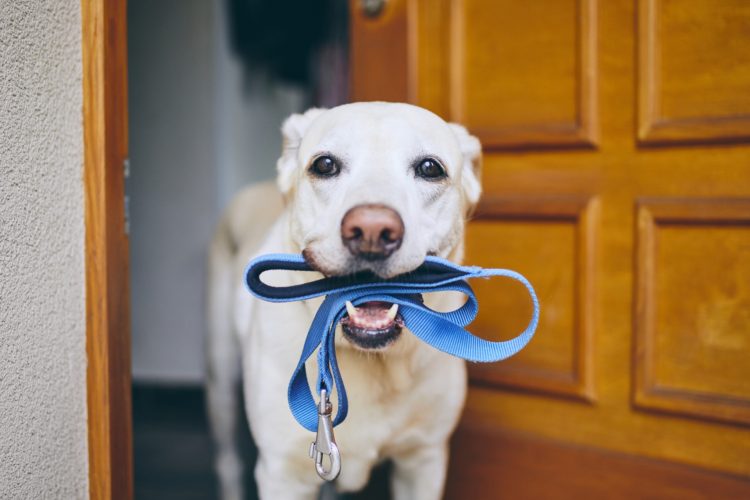Introduction:
Training your pet is one of the most rewarding parts of pet ownership. Not only does it help establish a strong bond between you and your furry friend, but it also ensures that your pet behaves in a safe, respectful, and enjoyable manner. Whether you have a puppy, kitten, or an older pet, training is crucial for their well-being and your peace of mind.
But where should you start? How do you begin the training process? In this article, we’ll cover the essential steps for starting your pet’s training, along with some basic techniques that can make the process smoother and more effective.
1. Why Should You Train Your Pet?
Before diving into training, it’s essential to understand the benefits. Training your pet doesn’t just mean teaching them tricks; it’s about fostering positive behaviors, ensuring their safety, and promoting good habits. Here are some key reasons why training is important:
- Safety: Teaching your pet basic commands like “sit,” “stay,” and “come” can keep them safe in potentially dangerous situations (e.g., avoiding traffic or responding to a recall when off-leash).
- Bonding: Training is a fantastic way to build trust and deepen the connection with your pet.
- Behavioral Control: Training helps prevent unwanted behaviors like chewing, jumping, or barking excessively.
- Socialization: Training can help your pet become more comfortable around other animals and people.
2. Essential Training Tips for Beginners
Whether you’re starting with a puppy, kitten, or adult pet, the fundamentals of training are similar. Here are some key tips to set yourself up for success:
a. Start Early (If Possible)
Starting training early is highly beneficial, especially for puppies and kittens. Early socialization and training can prevent future behavioral issues. However, it’s never too late to start, even with an adult pet. Older pets may take a little longer to train, but patience and consistency will yield results.
b. Keep Training Sessions Short
Pets, especially puppies and kittens, have short attention spans. Keep training sessions between 5 to 15 minutes. This allows your pet to remain focused and prevents them from getting frustrated or bored.
c. Be Consistent
Consistency is key to successful training. Use the same commands, gestures, and rewards each time. For example, if you want your dog to sit, always say the same command, such as “sit,” and use the same hand gesture. This consistency helps your pet understand what you expect of them.
d. Use Positive Reinforcement
Positive reinforcement is one of the most effective ways to train your pet. Reward your pet with treats, praise, or playtime when they perform the desired behavior. This motivates them to repeat the action. Avoid punishment-based training, as it can confuse your pet and damage the bond you share.
e. Patience is Key
Training can take time. Some pets will learn quickly, while others may require more practice. Don’t get frustrated; keep your expectations realistic and remain patient. Every pet learns at their own pace, and celebrating small victories along the way will keep both you and your pet motivated.
f. Use Clear and Simple Commands
Avoid overcomplicating things. Use clear, one-word commands like “sit,” “stay,” “come,” or “down.” The simpler the command, the easier it is for your pet to understand and follow.
3. Basic Training Commands and Techniques
Now that you know the essential tips, let’s dive into some basic training commands and techniques you can start using with your pet:
a. Sit
One of the simplest and most important commands to teach your pet is “sit.” It’s a foundation for many other behaviors and helps control your pet in various situations.
How to Teach Sit:
- Hold a treat in front of your pet’s nose.
- Slowly move the treat upward, allowing their head to follow the treat. This movement will naturally cause their bottom to lower.
- Once they are sitting, say “sit” and immediately reward them with the treat and praise.
- Repeat several times until they associate the action with the command.
b. Stay
The “stay” command is essential for keeping your pet in one place, especially in situations where you need them to remain calm or stationary.
How to Teach Stay:
- Start by having your pet sit.
- Hold your palm out toward your pet’s face and say “stay.”
- Take one step back, and if they stay in position, immediately reward them.
- Gradually increase the distance and duration, but keep the training sessions short to avoid frustration.
c. Come (Recall)
The “come” command is crucial for safety, especially if you allow your pet to roam off-leash or outside.
How to Teach Come:
- Start by saying your pet’s name, followed by “come.”
- Use a treat or toy to lure them toward you if they don’t respond.
- Once they come to you, reward them with a treat and praise.
- Repeat until they associate the word “come” with the action of approaching you.
d. Leave It
The “leave it” command helps prevent your pet from picking up something harmful or unwanted. This is especially useful for outdoor walks or when they get into something dangerous (like food or garbage).
How to Teach Leave It:
- Hold a treat in one hand and show it to your pet.
- Close your hand around the treat and say “leave it.”
- Wait for your pet to stop trying to get the treat.
- When they stop trying to get it, reward them with a different treat and praise.
e. Loose Leash Walking
Teaching your dog to walk politely on a leash without pulling is important for enjoyable walks and control in public spaces.
How to Teach Loose Leash Walking:
- Start by walking with your dog on a short leash.
- When your dog pulls ahead, stop walking. Wait until they return to your side or put slack in the leash.
- Once the leash is loose, reward them with praise or treats and continue walking.
- Consistency and patience are important in teaching this skill, so be prepared for gradual progress.

4. Socialization and Desensitization
Training your pet also involves proper socialization. Pets that are well-socialized are less likely to develop behavioral issues, such as aggression or anxiety, when exposed to new people, pets, or environments.
Socialization Tips:
- Introduce New Experiences Gradually: Expose your pet to new environments, people, and animals in a controlled and positive manner.
- Reward Calm Behavior: Whenever your pet interacts calmly with new stimuli, reward them with praise or treats.
- Start Early: Socializing pets, especially puppies and kittens, at an early age helps them develop confidence and adaptability.
5. Common Training Challenges and How to Overcome Them
Training can come with its fair share of challenges. Here are some common obstacles and how to deal with them:
a. Distractions
Pets, especially puppies and young animals, are easily distracted. Start training in a quiet environment before gradually introducing distractions.
b. Short Attention Span
If your pet gets distracted or loses interest, keep training sessions short and end on a positive note. Gradually increase the duration as your pet’s focus improves.
c. Inconsistency
Consistency is vital. Make sure everyone in your household uses the same commands and reinforces the same rules to avoid confusion.
6. When to Seek Professional Help
If you’re facing difficulties with your pet’s training or if they show signs of behavioral issues (such as aggression, fearfulness, or severe anxiety), consider seeking professional help. A professional dog trainer or animal behaviorist can offer specialized techniques and support to address these problems.
7. Conclusion
Training your pet is an ongoing process that requires patience, consistency, and positive reinforcement. Start with basic commands and gradually build on them. Keep training sessions short, fun, and rewarding, and remember to stay consistent with your expectations. Whether you’re teaching your dog to sit or your cat to use the litter box, every bit of training strengthens your relationship and enhances your pet’s well-being.
By laying the foundation with basic skills and socializing your pet early, you’re setting both of you up for a long, happy, and well-behaved companionship. Happy training!























































